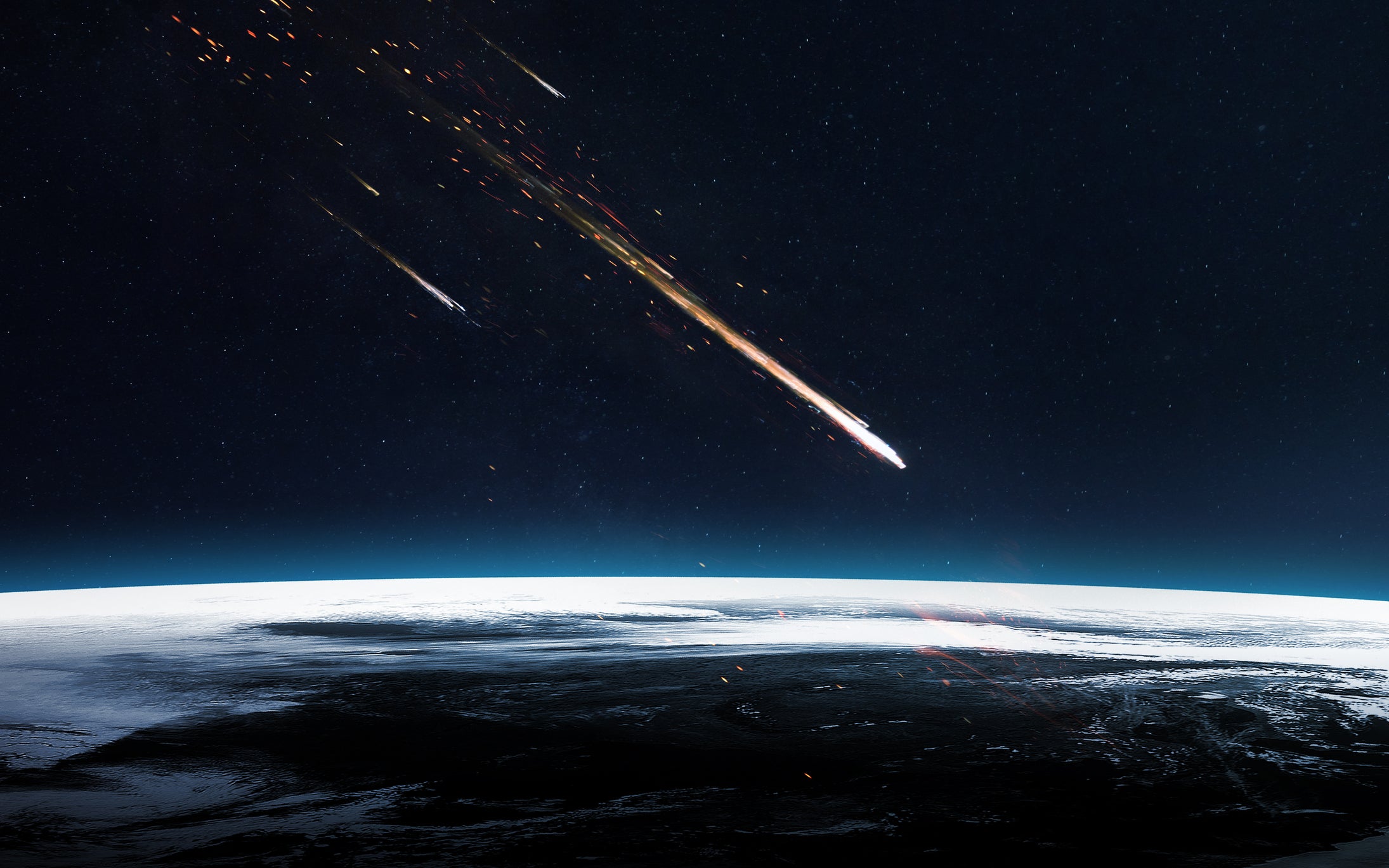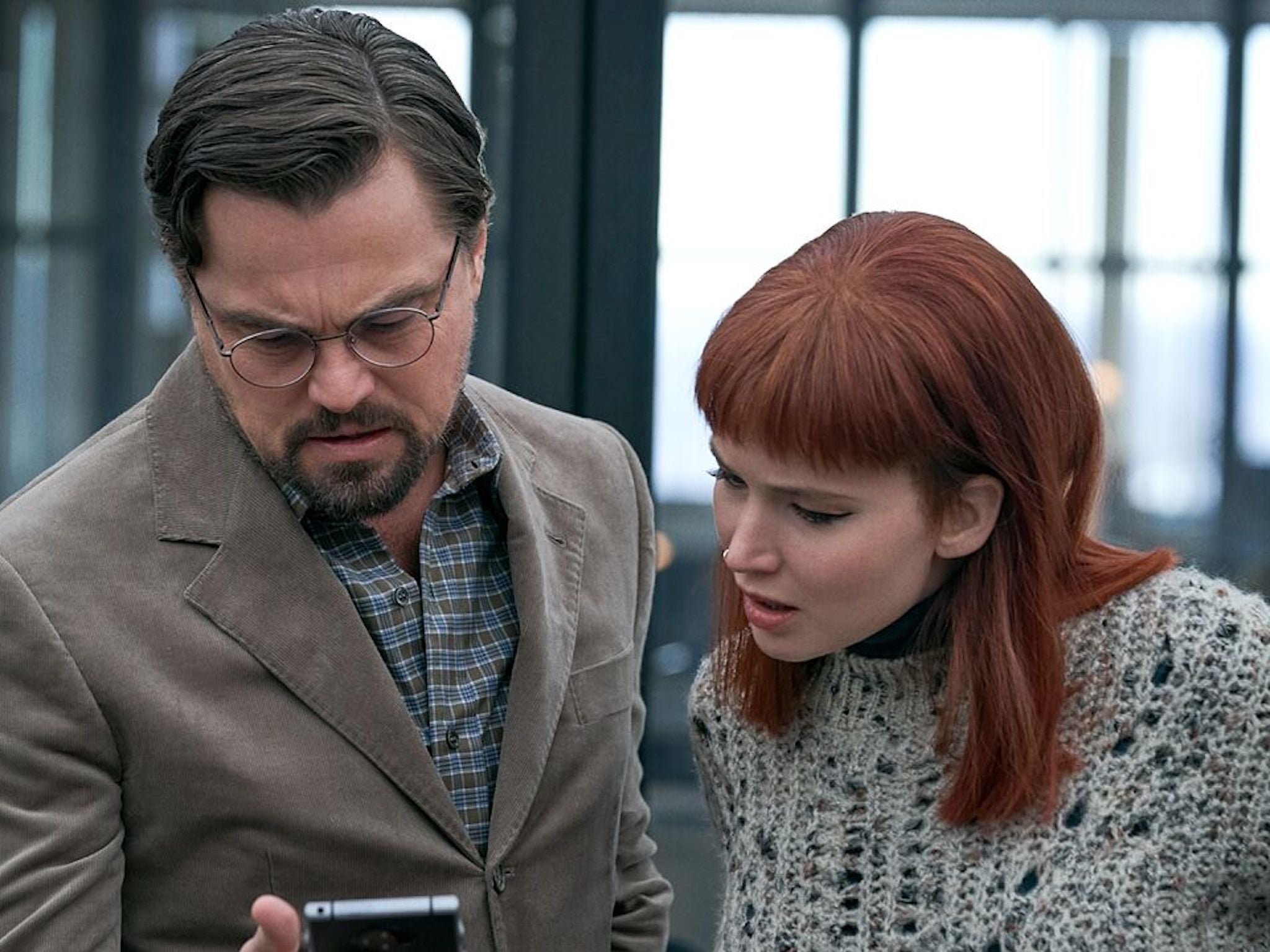How do we really deal with asteroids heading for Earth?
‘Don’t look up’ is fiction, but the truth is that there are several asteroids heading towards Earth, so how do we really deal with these ‘planet destroyers’? Monica Grady explains

Don’t look now – but we are currently experiencing a rash of stories about a forthcoming global catastrophe. However, in a change from reports of pandemics and climate change, this global catastrophe is produced by the impact of a giant asteroid. Or a comet. Or both. This may feel extra ominous given the events in the recent Netflix film Don’t Look Up, in which the Earth is threatened by a “planet killer” asteroid.
But how worried should we really be – and what would happen if such a body actually hit us?
It has been my experience that killer asteroids tend to strike in the summer months, when news is thin on the ground. Maybe we are so tired of grim news about the spread of the Omicron variant and its associated problems that a killer asteroid (or comet) makes a refreshing change.
Some UK newspapers have turned to Nostradamus, the 16th-century astrologer. A couple ran stories at the end of 2021 about 2022 being the year in which Nostradamus had predicted that the world would end in a giant impact with a body from space. This hook has resulted in tabulations of objects that may (or more likely will not) come close to the Earth in 2022.
My favourite list was published by The Sun, which described five asteroids heading towards the Earth in January alone.
The scary headline and its accompanying image of our world in apparent danger is somewhat undermined by the sentences that follow, in which the newspaper states that “all of the forecasted [sic] asteroids this year will pass by Earth by a significant distance and [it] is very unlikely they will hit our planet”. We have already missed (or been missed by) the first two asteroids in this list (2021 YQ and 2021 YX), which hurtled by Earth on 5 January at distances of 1.3 and 2.4 million miles respectively.
There is a well-tested protocol for reporting new asteroids and comets, which is how we know about the ones passing close(ish) to Earth this month
No, I didn’t notice them either – and I study asteroids. There are a further three asteroids predicted to pass between 1 and 5 million miles from the Earth in the next few days, ranging in size from that of a car to that of the Statue of Liberty. The one that will get the closest will still be four times as far away as the moon, so not exactly close calls.
Is ‘Don’t Look Up’ realistic?
Don’t Look Up is an allegory, using the globally catastrophic impact of a “planet killer” to represent the globally catastrophic impact of climate change. It is a tale of corruption, venality, and political and corporate self-interest placed ahead of the health and welfare of humanity. It is also very funny.
Without giving away too many spoilers, the plot focuses on two astronomers (a graduate student and her professor) who discover a comet that will collide with Earth in six months’ time. They try to tell the president of the United States (played gloriously by Meryl Streep), but she is more concerned with the midterm elections.
The film pokes fun at US right-wing politics, the influence of donations to political parties on policy (and politicians), the increasing capacity for modern technology to collect information about health, habits and lifestyle, and the use of that information by technology giants.

It does not poke fun at the science, though: the discovery of the comet is (sort of) realistic. Which is as it should be, since Amy Mainzer, principal investigator of Nasa’s Neowise asteroid-tracking programme, was scientific adviser to the production. In the film, the astronomers report their findings to the Planetary Defense Coordination Office, which, as the movie shows, is a real organisation operated by Nasa.
So is the film realistic? The Earth has been hit by large asteroids in the past – which is why there are no enormous dinosaurs roaming the planet today. And it is bombarded every day with tonnes of dust and meteorites. It is certain that a “planet killer” is written in the future (though occurring at most once in 50 million years) – and this is taken much more seriously by international governments than is shown in the film.
There is a well-tested protocol for reporting new asteroids and comets, which is how we know about the ones passing close(ish) to Earth this month.
There are also plans to mitigate, or preferably avoid entirely, the potential consequences of an asteroid colliding with the Earth. These typically rely on deflecting the asteroid’s course, as trying to shoot it down at the last minute isn’t feasible – it would take too much energy. The launch in November of Nasa’s Dart mission, a technology-testing expedition, will further help shed light on how to best deflect asteroids threatening Earth.
But where Don’t Look Up touches a nerve is in the lack of preparedness for the emergency, if (when) it finally happens and the mitigation plans have failed. Here I come back to its function as an allegory of climate change. There is no Plan B. In the film, the slogan “Don’t Look Up” is a denial that an approaching comet will destroy the planet – it is portrayed as fake news.
I thought it was a great film. It is entertainment. But it is not fake news. We are a global community, and we must act together.
Monica Grady is a professor of planetary and space sciences for the Open University. This article first appeared on The Conversation




Join our commenting forum
Join thought-provoking conversations, follow other Independent readers and see their replies
0Comments